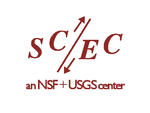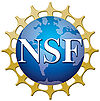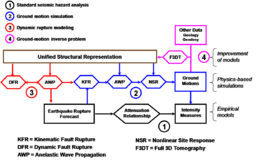Difference between revisions of "CME Project"
| Line 17: | Line 17: | ||
== Previous Topics == | == Previous Topics == | ||
| − | Links | + | Links projects listed on the CME home page previously. |
* [[CME_Project_Pages]] | * [[CME_Project_Pages]] | ||
== See Also == | == See Also == | ||
| − | + | The SCEC/CME is part of the SCEC NSF and USGS funded research center. | |
*[http://www.scec.org/ SCEC Home Page] | *[http://www.scec.org/ SCEC Home Page] | ||
Revision as of 06:40, 22 April 2017
Contents
Community Modeling Environment (CME)
The SCEC Community Modeling Environment (CME) Project started in 2001 as a National Science Foundation (NSF) Information Technology Research (ITR) award to PI: Thomas Jordan, Bernard Minster, Carl Kesselman, and Reagan Moore. The CME collaboration applies advanced computer science technology to develop improved seismic hazard analysis. CME researchers develop structural models of California faults and geology, develop and validate rupture physics models, perform large-scale regional wave propagation simulations, collaborate with engineers studying engineering response to ground motions, and integrate computational improvements into probabilistic seismic hazard calculations.
Collaborative Project Entries
The following link will take you to an alphabetically sorted list of all SCECpedia pages.
Main Page
Current project activities are posted on the SCECpedia home page.
Previous Topics
Links projects listed on the CME home page previously.
See Also
The SCEC/CME is part of the SCEC NSF and USGS funded research center.
Recent Earthquake Information
An important goal of SCEC earthquake research is to reduce the hazard from future earthquakes by developing physics-based predictive models of earthquake processes.
License
Except as otherwise noted, the content of this page is licensed under the Creative Commons Attribution 3.0 Unported License, and code samples are licensed under the Apache 2.0 License. For details, see our Site Policies.
![]()



